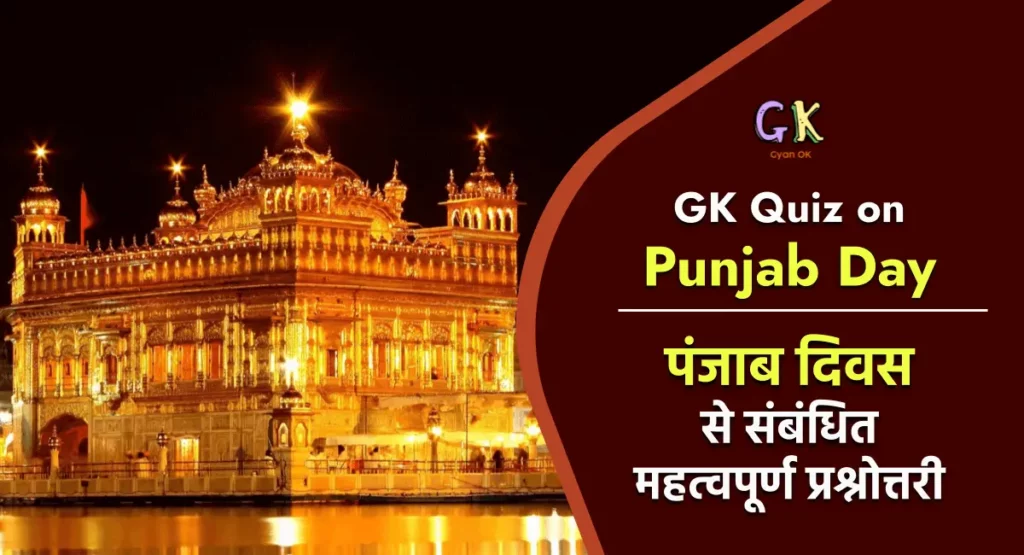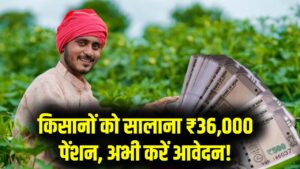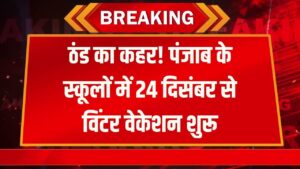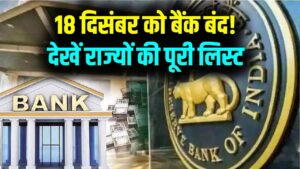Punjab Day in India is celebrated with great enthusiasm, featuring cultural programs, parades, and festivities that highlight the rich Punjabi heritage. It commemorates the state’s formation and showcases its unique culture, music, and traditions. To make this special occasion even more engaging, we have prepared a quiz on Punjab Day, allowing people to test their knowledge and celebrate the essence of Punjab’s history and culture.

General Knowledge Quiz on Punjab Day
Punjab Day is celebrated on November 1st each year to commemorate the reorganization of the Indian state of Punjab in 1966. On this day, the state was divided into two separate entities: Punjab and Haryana, as well as the union territory of Chandigarh. This division aimed to address linguistic and administrative concerns. Punjab Day holds significance as it marks the establishment of these distinct regions, each with its unique cultural and administrative identity. It symbolizes the spirit of unity and diversity in India, showcasing the country’s commitment to accommodating linguistic and regional diversity within its federal structure.
Following we have provided MCQs on the occassion of Punjab Day for the purpose of self-assessment and to help you gain some additional insights on the topic.
Q1. Who won the Sahitya Akademi Award for Punjabi language in 2022?
A) Gurdev Singh Rupana
B) Sukhjit
C) Khalid Hussain
D) Kirpal Kazak
Answer: B) Sukhjit
Q2. The word ‘Punjab’ is taken from which language?
A) Punjabi
B) Urdu
C) Arbi
D) Farsi
Answer: D) Farsi
Q3. Who is the current Chief Minister of Punjab?
A) Charanjit Singh Channi
B) Sukhbir Singh Badal
C) Capt. Amarinder Singh
D) Bhagwant Mann
Answer: D) Bhagwant Mann
Q4. Which city of Punjab is famous for the manufacturing of sports goods?
A) Ludhiana
B) Patiala
C) Batala
D) Jalandhar
Answer: D) Jalandhar
Q5. Who was the first Chief Minister of Punjab?
A) Dr. Gopi Chand Bhargava
B) S. Partap Singh Kairon
C) S. Lachhman Singh Gill
D) Shri Bhim Sen Sachar
Answer: A) Dr. Gopi Chand Bhargava
Q6. Which of the following Punjabi folk dances is not a dance form for males?
A) Jhumar
B) Bhangra
C) Malwai Giddha
D) Sammi
Answer: D) Sammi
Q7. Who is the current Governor of Punjab?
A) VP Singh Badnore
B) Banwarilal Purohit
C) Shivraj V. Patil
D) Kaptan Singh Solanki
Answer: B) Banwarilal Purohit
Q8. What was the theme of Punjab’s tableau in the Republic Day Parade 2022 at New Delhi?
A) Jallianwala Bagh Massacre
B) Martyrdom of Guru Teg Bahadur Ji
C) Sangat and Pangat
D) Contribution in Freedom Struggle
Answer: D) Contribution in Freedom Struggle
Q9. Which city is the capital of Punjab?
A) Ludhiana
B) Amritsar
C) Chandigarh
D) Patiala
Answer: C) Chandigarh
Q10. Which river separates the Malwa and Doaba regions?
A) Satluj
B) Ravi
C) Beas
D) Jhelum
Answer: A) Satluj
Q11. Which country has the largest number of Punjabi-speaking people?
A) Canada
B) India
C) Australia
D) Pakistan
Answer: D) Pakistan
Q12. Which Sikh general conquered Delhi and unfurled a Nishan Sahib at the Red Fort?
A) Bhai Baghel Singh
B) Bhai Baaz Singh
C) Hari Singh Nalua
D) Baba Banda Singh Bahadur
Answer: A) Bhai Baghel Singh
Q13. Which city was the capital of Punjab before India gained independence?
A) Chandigarh
B) Amritsar
C) Lahore
D) Delhi
Answer: C) Lahore
Q14. What is the literal meaning of the name Punjab?
A) Land of five rivers
B) Land of seven rivers
C) Area near Mount Abu
D) Kingdom of five Pandavs
Answer: A) Land of five rivers
Q15. Who became the Chief Minister of Punjab the most number of times?
A) Partap Singh Kairon
B) Parkash Singh Badal
C) Shivraj V. Patil
D) Justice Gurnam Singh
Answer: B) Parkash Singh Badal
Q16. Which of the following Indian freedom fighters killed a British officer in Britain?
A) Bhagat Singh
B) Chandra Shekhar Azad
C) Udham Singh
D) Ashfaqulla Khan
Answer: C) Udham Singh
Q17. There is a railway link between New Delhi and Lahore (Pakistan). On this route, which is the last railway station on the Indian side?
A) Amritsar
B) Wagah
C) Attari
D) Jalandhar Cantt
Answer: C) Attari
Q18. Which of the following crops is shown on the emblem of Punjab, symbolizing the agricultural prosperity of the state?
A) Wheat
B) Rice
C) Cotton
D) Sugarcane
Answer: A) Wheat
Q19. What is the famous wrestling style in Punjab?
A) Kushti
B) Pehlwani
C) Mallakhamb
D) Judo
Answer: A) Kushti
Q20. Which Sikh guru is associated with the construction of the Golden Temple in Amritsar?
A) Guru Nanak Dev Ji
B) Guru Ram Das Ji
C) Guru Arjan Dev Ji
D) Guru Gobind Singh Ji
Answer: B) Guru Ram Das Ji
Q21. Which festival is widely celebrated in Punjab to mark the harvest season and is known for its vibrant dance and music?
A) Diwali
B) Holi
C) Lohri
D) Eid
Answer: C) Lohri
Q22. Who wrote the famous Punjabi poem “Anand Karaj,” which is recited during Sikh weddings?
A) Guru Nanak Dev Ji
B) Guru Arjan Dev Ji
C) Guru Gobind Singh Ji
D) Guru Ram Das Ji
Answer: D) Guru Ram Das Ji
Q23. What is the traditional Punjabi dance often performed at weddings and other festive occasions?
A) Kathak
B) Giddha
C) Garba
D) Bharatanatyam
Answer: B) Giddha
Q24. Which historical event took place at the Jallianwala Bagh in Amritsar in 1919?
A) Indian Independence Day
B) Dandi March
C) Quit India Movement
D) Massacre by British troops
Answer: D) Massacre by British troops
Q25. Who was the famous Punjabi Sufi poet and saint known for his spiritual verses?
A) Bulleh Shah
B) Guru Nanak Dev Ji
C) Sheikh Farid
D) Kabir Das
Answer: A) Bulleh Shah
Q26. Which Punjabi singer is often referred to as the “Voice of Punjab” and is known for his folk and Sufi songs?
A) Diljit Dosanjh
B) Gurdas Maan
C) Honey Singh
D) Babbu Maan
Answer: B) Gurdas Maan
Q27. What is the traditional Punjabi attire often worn by men, consisting of a kurta and churidar?
A) Lehenga
B) Sherwani
C) Dhoti
D) Achkan
Answer: B) Sherwani
Q28. Which famous Punjabi dish is a combination of deep-fried lentil fritters soaked in yogurt and spices?
A) Tandoori Chicken
B) Rajma Chawal
C) Chole Bhature
D) Pakora Kadhi
Answer: D) Pakora Kadhi
Q29. Which of the following is a renowned Sikh shrine located in the city of Amritsar?
A) Harmandir Sahib (Golden Temple)
B) Akal Takht
C) Hemkund Sahib
D) Patna Sahib
Answer: A) Harmandir Sahib (Golden Temple)
Q30. Who composed the famous Punjabi poem “Jungle Nama” that narrates the story of the Indian jungle?
A) Sahir Ludhianvi
B) Amrita Pritam
C) Shiv Kumar Batalvi
D) Amrita Sher-Gil
Answer: B) Amrita Pritam
History of Punjab Formation
The formation of the Indian state of Punjab is a complex historical process that evolved over several decades, influenced by political, social, and cultural factors. Punjab’s formation can be primarily attributed to the Partition of India in 1947 and the reorganization of states in India in 1966. Here is a concise explanation of how Punjab’s formation took place:
- Historical Background: Punjab, historically known as the land of the five rivers (Jhelum, Chenab, Ravi, Beas, and Sutlej), has a rich history dating back thousands of years. It was a significant center of culture, trade, and agriculture during various empires, including the Mauryan, Gupta, and Mughal dynasties.
- Partition of India (1947): The partition of India in 1947, following independence from British colonial rule, had a profound impact on Punjab. The region was divided into two separate entities: East Punjab became part of India, while West Punjab became part of the newly formed Pakistan. This division was based on religious lines, with a majority of Muslims in West Punjab and a majority of Sikhs and Hindus in East Punjab.
- Formation of East Punjab (1947): East Punjab, comprising predominantly Sikh and Hindu populations, faced significant challenges during and after partition. There was large-scale migration, communal violence, and the need to absorb refugees from West Punjab. The region struggled with post-partition turmoil and rebuilding.
- Reorganization of States (1966): The reorganization of states in India in 1966 played a crucial role in Punjab’s formation as a distinct state. Prior to this, Punjab was a bilingual state with Punjabi and Hindi as its official languages. However, demands for linguistic states were growing, and the Punjabi-speaking people sought a separate Punjabi-speaking state.
- Creation of Punjab and Haryana: On November 1, 1966, the Indian government reorganized Punjab into two separate states: Punjab and Haryana. The newly formed Punjab retained its Punjabi-speaking identity and a Sikh-majority population, while Haryana became a separate state for Hindi-speaking communities. Chandigarh, a city that was the capital of Punjab, became a union territory serving as the capital of both Punjab and Haryana.
- Subsequent Developments: Punjab, as an independent state, continued to evolve politically and socially. It faced challenges related to Sikh militancy in the 1980s and early 1990s, which significantly impacted its governance and stability. However, in recent years, Punjab has seen relative peace and development.





